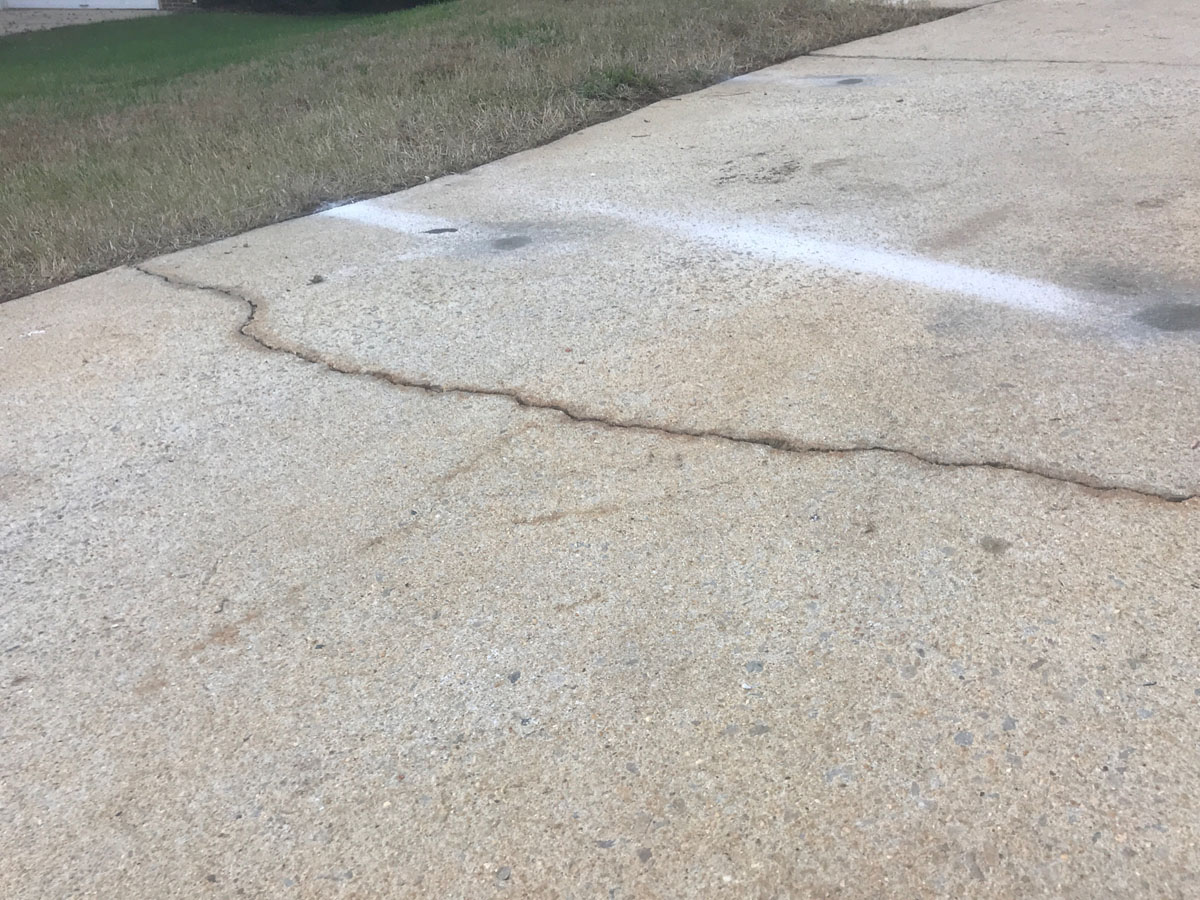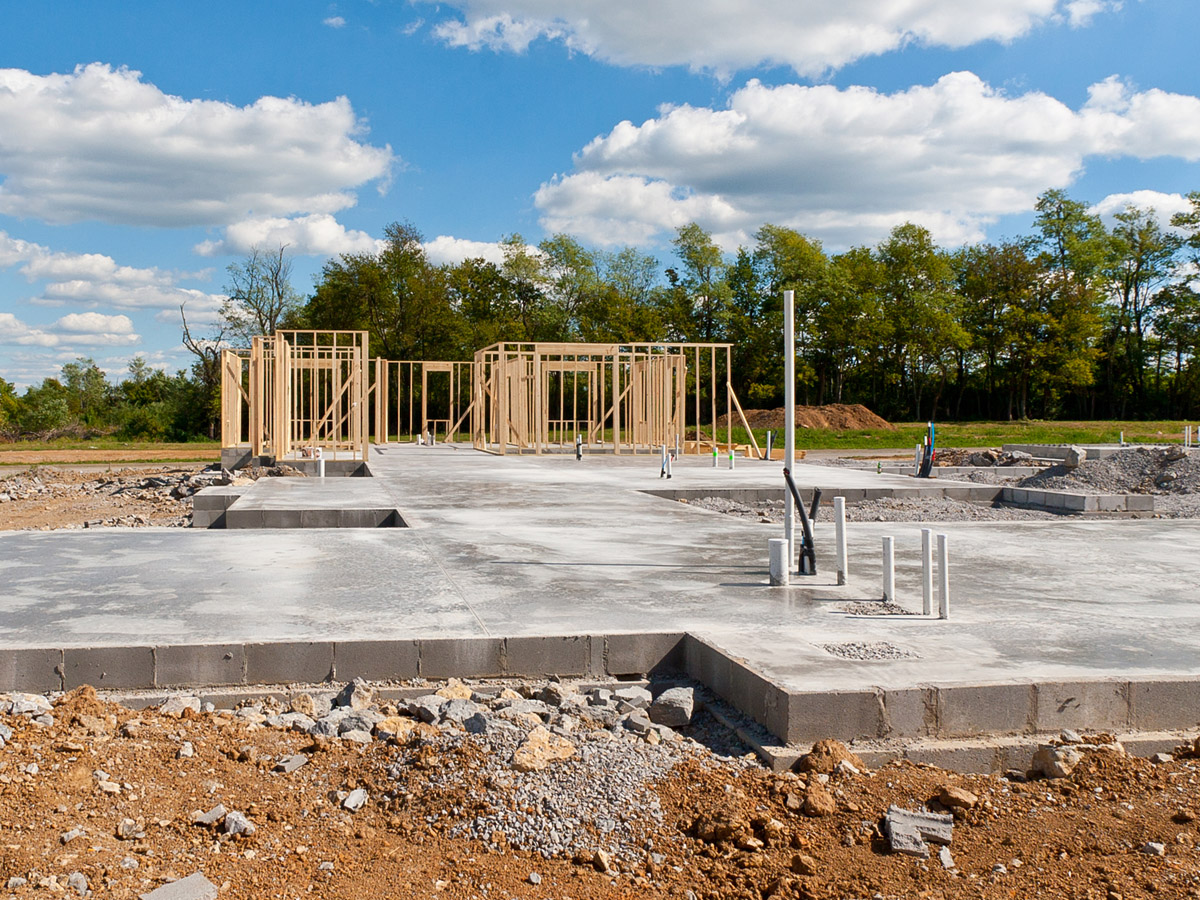

To seal and eliminate or reduce water leakage from concrete cracks and joints. Therefore, if repairs are needed for these types of cracks, a sealing
/GettyImages-147217539-584b09cb3df78c491e1ab228.jpg)

Not normally used to repair shallow cracks, drying shrinkage cracks, or patternĬracking. Also, due to the high cost of resin injection, it is Usually not possible to structurally rebond cracks that are leaking water, areĭirty, or are very wet. Methacrylic acrylates are used to seal cracks or joints that leak water. That are dormant and relatively dry, while various polyurethanes and some Epoxy resins are used to structurally rebond cracks Or delaminated, as well as to seal cracks or joints in concrete that isĮxperiencing water leakage.
Concrete slab crack repair 27513 cracked#
Resin injection is used to repair concrete that is cracked Additional reinforcement is typicallyĪdded if the shear or tensile capacity of a structural element has been, or Injection, and (2) adding additional reinforcement. There are two basic types of crack repair: (1) resin Including whether the cracks are dormant or active (moving) exposureĬonditions should be considered, wetting and drying, etc. Other words, the cause and extent of the cracks or leaks should be determined, Reclamation’s seven-step process should be followed for crack repairs. In many Reclamation structures, if the concrete cracks, there is also a water Properly repairing cracks and leaks can be the most difficult type of repair. Significantly different from methods for thin or thick repairs. TheyĪre treated separately from other concrete repair methods because they are This type of repair consists of the following materials Ĭrack and leak repair methods are described below. Of thick repairs include replacement concrete, preplaced aggregate concrete, In such cases,Ĭonsideration should be given to anchoring additional reinforcement (that willīe embedded in the repair material) to the existing concrete. If the repairs do not encompass any steel from theĮxisting structure, they are typically at least 6 inches thick. In general, thick repairs refer to repairs that are aboutģ inches thick and that completely encompass at least some reinforcing steelįrom the existing structure. In some circumstances, thin repairs my lead to acceleratingĭeterioration behind or adjacent to the repair. Insufficiently thick repairs to some concretes should not be considered Mortars, and polymer mortars (including epoxy mortars). Thin repairs include surface grinding, Portland cement mortar, some coatingsĪnd surface sealers, dry pack mortar, packaged cementitious and chemical repair Thin repairs are generally from about ¼- to about 2 inchesĭeep and do not encompass any existing reinforcing steel. High Molecular Weight Methacrylic Sealing Compounds.Sealers and coatings comprises of four divisions Reclamation has a large inventory of aging concrete that isĮxperiencing deterioration resulting in cracking or exacerbated by cracking.Įffective sealing and coating compounds for smaller cracks could slow or halt

In most geographical locations and climates, and many types of concrete Cracks can allow the ingress of moisture and other compounds intoĬoncrete, leading to further deterioration. Sealing concrete surfaces and cracks in concrete that is in overall goodĬracks in concrete are widely regarded as long-termĭurability and maintenance problems because they increase the permeability of These materials are not suitableįor repairing badly damaged or deteriorated concrete, but they are suitable for Reduce or prevent associated deterioration such as corrosion of rebar,įreeze-thaw, carbonation, or sulfate damage. Penetration of water, aggressive solutions, or gaseous media.


 0 kommentar(er)
0 kommentar(er)
